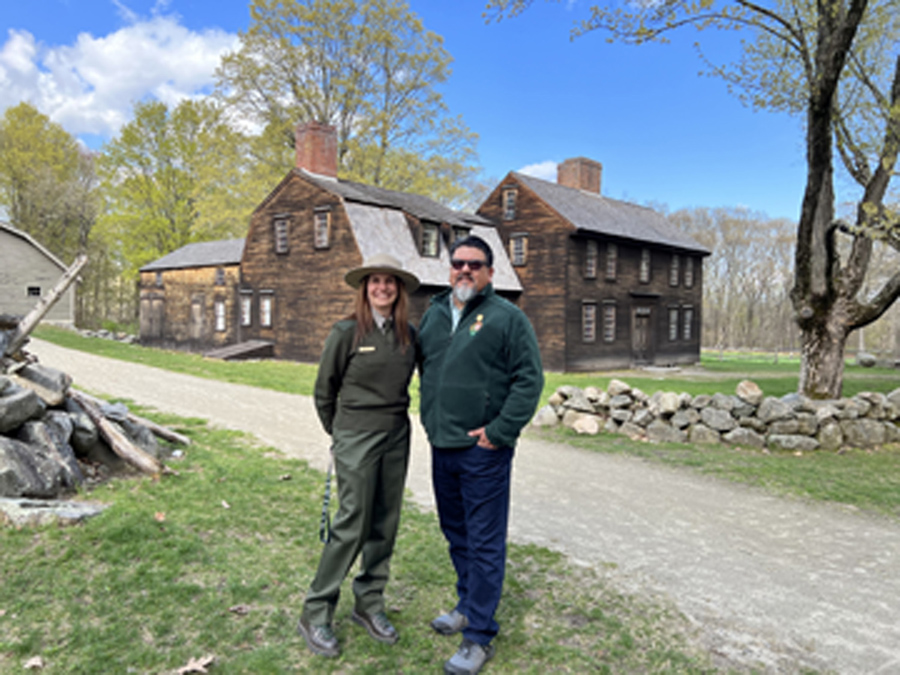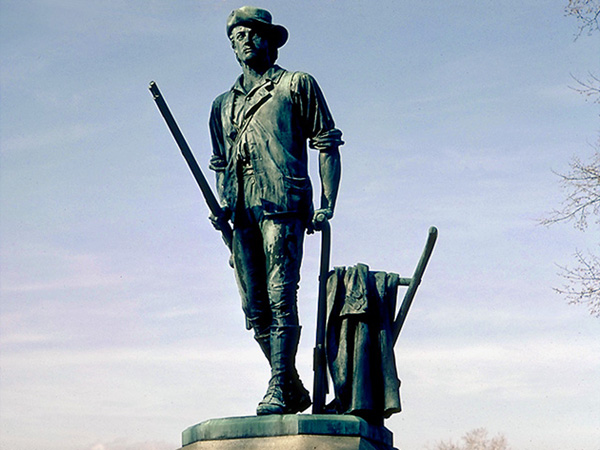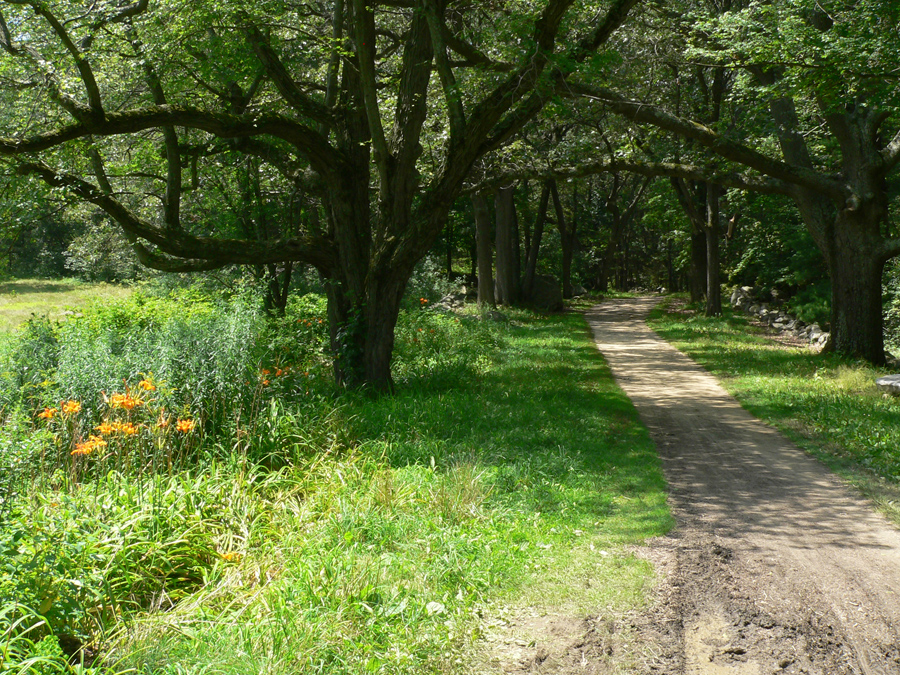Simone Monteleone, Superintendent, Minute Man National Historical Park, Concord, Lincoln, and Lexington, MA

Chuck Sams at Hartwell Tavern
Simone Monteleone is the Superintendent for Minute Man National Historical Park. A 16-year veteran of the National Park Service,her first position was as the Cultural Resources Program Manager for Rock Creek Park in 2007. She graduated from Lynchburg College (University of Lynchburg) in 1996 and completed her Master’s in Historic Preservation at the University of Pennsylvania in 1998. During her time in the private sector after graduation, Ms. Monteleone worked at several firms as an architectural historian working on National Register nominations, Federal Rehabilitation Tax Credit projects, and architectural surveys. After working at Rock Creek Park, she served as the Chief of Resource Management at the George Washington Memorial Parkway, acting Superintendent for Richmond National Battlefield Park/Maggie L. Walker National Historic Site, a Cultural Resources Specialist for the Storm Recovery Team for the National Park Service’s Southeast Region, and as Chief of Cultural Resources for the Southeast Region before arriving at Minute Man in November 2021.
What led you to your field?
During the spring semester of my junior year at Lynchburg College (now the University of Lynchburg), I did an internship at Thomas Jefferson’s Poplar Forest (Thomas Jefferson's Poplar Forest – Experience Thomas Jefferson. Discover his personal retreat. Step into his private world.). My internship focused on archival research and documentation for the site, but the preservation team was just getting underway for the first major phase of restoration of the main house. Seeing that effort in action made me realize that historic preservation and cultural resources management was the career path for me.
How does what you do relate to historic preservation?
As a park superintendent for the National Park Service, historic preservation is at the core of so much of what we do to preserve our nation’s cultural resources for this and future generations. Some of the most exciting parts of my job are being able to share with the public why historic preservation is important through highlighting the efforts happening in the park and having youth participants work directly with our preservation teams to learn the historic trades.
Why do you think historic preservation matters?
Historic preservation gives communities the opportunity to protect the fabric of their past, their sense of place, and have a tangible reminder of their history in such a way that can never be fully appreciated through other means. Personally, two of the most powerful places I have ever visited were the Lower East Side Tenement Museum in New York City and the Flight 93 National Memorial in Pennsylvania. In the case of the Tenement Museum, I reflected on what the experiences might have been like for my father’s family when they arrived in New York from Italy in the early 20th century. Walking through each floor and seeing the spaces, learning the stories of those who occupied the units, it was an inspirational experience to get a sense of the perseverance by immigrant communities in America. As for the Flight 93 National Memorial, that visit was emotionally charged based on my own personal experience on 9/11. Having the opportunity to walk within that landscape was therapeutic and walking along the wall to see the names who died was very intense. This is why historic preservation matters because you don’t have the opportunity to feel things in the same way as when you are standing within the walls of a witness structure or out on the landscape where sacrifices were made. Preservation is a mechanism that allows the soul to never forget. Both sites for very specific reasons spoke to me directly, and it is through historic preservation that such places are even accessible for all to reflect, learn, and remember.
What courses do you recommend for students interested in this field?
Internships and field schools are so important in giving a student the opportunity to see how course work can be applied in real world situations. Equally important is that it can give you a sense if this career field is something that you truly want to do. School doesn’t prepare you for the more interesting tasks you will do in the preservation field such as walking through an abandoned building to complete current condition documentation for a Federal Rehabilitation Tax Credit application and having more rats than people to observe your work!
Do you have a favorite preservation project? What about it made it special?
This is a tough question! I’ve had the chance to work on some amazing projects both in the private sector as an architectural historian and with the National Park Service as a cultural resources manager. One of my favorites was working as part of an interdisciplinary group for the National Park Service’s Storm Recovery Team to support the rebuilding efforts at parks affected by Hurricanes Irma and Maria in 2017. I had the chance to work on preservation projects at Christiansted National Historic Site on St. Croix and Virgin Islands National Park on St. John and St. Thomas. The devastation was extensive with some historic buildings destroyed by Hurricane Maria, but working as a team to complete documentary research, design development, and Section 106 of the National Historic Preservation Act (NHPA) compliance to assist with rehabilitation efforts so sites could be re-opened to the public or house park employees who were displaced was so satisfying.

Can you tell us what you are working on right now?
At Minute Man National Historical Park, several of the historic buildings were witness to the opening battle of the American Revolution on April 19, 1775. The Park also incorporates some areas of the battlefield that saw the heaviest fighting on that day. We are well underway with a multi-year rehabilitation and restoration project funded through the Legacy Restoration Fund of the bipartisan 2020 Great American Outdoors Act. This project includes conservation work on several monuments including Daniel Chester French’s The Minute Man, repair to the park’s trail system including the Battle Road Trail which retains segments of the original route where the British Regulars retreated to Boston, rehabilitation of several cultural landscapes, and preservation/rehabilitation on numerous historic buildings including the Captain William Smith House (ca. 1692) and the Elisha Jones House (ca. 1740). It is a busy time as we get ready for the 250th anniversary in 2025.
How do you think the national historic preservation programs help your community?
Having access to subject matter experts through the national historic preservation programs is a real benefit for local communities. This can be especially true when exploring preservation grants that could be available for community-based preservation projects. The National Park Service has a robust grants office that manages an array of grants available to state, local, and tribal governments (State, Tribal, and Local Plans and Grants Division (U.S. National Park Service) (nps.gov)). The expertise from national programs is also helpful to communities for projects that are in their area and initiated by the federal government or through permitting actions by the federal government where Section 106 of the NHPA is triggered. The ACHP and the National Trust for Historic Preservation are just some of the preservation programs that can help communities understand how they play a role in that process.
Do you have advice for novice preservationists?
Don’t be afraid to get involved! There are so many opportunities outside of the job to become involved with preservation that can help broaden your skillset and introduce you to the communities around you. I found that reaching out to local nonprofit groups as well as joining a community of practice through local chapters of some of the national groups (such as the Association for Preservation Technology) is a wonderful way to both network and learn about some great projects that are happening.
The ACHP’s mission is “preserving America’s heritage;” can you give us an example of how your community is preserving its heritage?
The commitment to preservation and honoring events from a community’s history are quite evident in the towns of Lexington, Lincoln, and Concord which surround Minute Man National Historical Park. One example I would mention is the current efforts by First Parish Church in Concord, Massachusetts, to preserve one of the most important buildings in town related to the events leading up to the American Revolution. Efforts are underway to rehabilitate and open to the public the Wright Tavern. Site of the First Massachusetts Provincial Congress in October 1774 and a witness structure to the events on April 19, 1775, the Wright Tavern is prominently located in the town square and is a National Historic Landmark. This is just one example of several ways the towns are highlighting the preservation of their heritage associated with the American Revolution.

What are the key historic preservation challenges faced by Minute Man National Historical Park, considering its significance in the American Revolutionary War? How does the park prioritize and address these challenges?
As the Minute Man National Historical Park plans for beyond the generous investment through the Great American Outdoors Act (GAOA), we are focused on several issues that will continue to challenge us into the future. This might come as a surprise to some, but natural threats including invasive plants and insects are issues that can have a big impact to the park’s cultural landscapes, battle sites, and historic buildings. One particularly troublesome pest for the park is the powderpost beetle. They can cause extensive damage to the wood frame buildings in the park, and our monitoring program, especially for those buildings that are not fully occupied, are crucial in providing staff with the ability to respond quickly if we detect any activity. This will be even more crucial as we conclude the rehabilitation and preservation efforts completed through GAOA. In addition, each season we prioritize specific areas of the park to target for our invasive plant management efforts and partner with other National Park Service sites in the area to share resources. Part of our prioritization focuses on our most sensitive battle sites as well as trying to target specific species, including those that are just emerging, to prevent them from establishing a strong presence in the landscape. This is where a key piece of our preservation strategy is the nurturing of collaborative relationships with our town partners as invasive plants and insects don’t pay attention to boundaries.
Could you share some examples of successful preservation projects carried out at Minute Man National Historical Park? How have these projects enhanced the visitor experience and contributed to a better understanding of the park’s historical importance?
Historic preservation efforts have been a key component to the landscape visitors enjoy today at Minute Man National Historical Park. One of our most significant buildings, Hartwell Tavern (1733), is located at the heart of our Battle Road unit. The preservation project on this building by our Historic Architecture, Conservation and Engineering staff is a testament to the dedication to the historic trades, importance of research and documentation, and adherence to The Secretary of Interior’s Standards for the Treatment of Historic Properties. It is one of our main visitor locations where during our summer months we have programming that includes musket demonstrations and access to the Tavern. During our annual Patriots’ Day commemorative events, Hartwell Tavern is in the middle of the action as our civilian evacuation program and tactical demonstration brings the stories of April 19, 1775, directly to our visitors. Being able to look out the Tavern’s window onto the battlefield and walk where the minuteman and militia companies engaged with the British Regulars really does help to bring history to the visitors in a tangible way. Together, historic preservation and interpretative programming provides a dynamic visitor experience.
Read more Q&A stories about the Preservationists in Your Neighborhood!